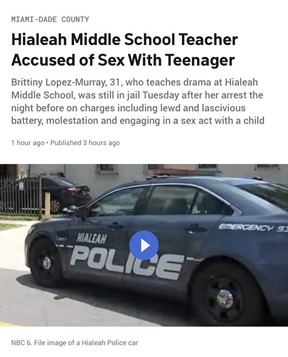Unfortunately, every day in the media, there is conflicting language used in headlines reporting child sexual assault and abuse…


The above examples from the same news publication and almost identical crimes — yet have two very different headlines. Let’s take it a step further, can you spot the error in reporting here?

That’s right, in this instance when the abuser was a woman, Newsweek decided to depict the abuse as “Having Sexual Relationship With 14-Year-Old for 2 Months”. Language matters and when an adult exploits their position of power to sexually abuse and victimize a child, members of the media have a responsibility to use language which accurately articulates the crime.
Whether the perpetrator is male or female or ANY other circumstance, a child CANNOT consent. It’s never “sex with”, but always “abuse/assault of”… ALWAYS!
Any depiction of child sexual abuse as a “relationship” is not merely semantical, it’s a damaging misrepresentation of the truth which furthers stigma and misinformation. A child cannot consent. Perpetrators manipulatively groom children to break down barriers, test secret-keeping, and foster trust and intimacy before violating the ultimate boundary. Many victims do not disclose for fear of being shamed, blamed, or not believed. Today, 75% of child victims don’t report sexual abuse for a year, 45% stay silent for at least five years, and many never tell.
As a society we need to educate the age old saying of if you know better, you do better. Language which depicts a child as a willing participant in their abuse must be immediately corrected and further remedied in future reporting. While 1 in 3 girls and 1 in 5 boys will become a victim of sexual abuse before age 18, and sexual assault continues to be the most under-reported crime in America, we can all work together to shine light into the darkness. Help us amplify this important message by sharing our Abuse Language Guide here!

